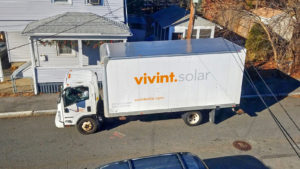Leading U.S.-based full service residential solar provider Vivint Solar (NYSE:VSLR) is definitely a niche type of company. If you’re not particularly into green energy, then it will be harder to appreciate the outstanding value that comes with VSLR stock.

On the other hand, you don’t have to have solar panels in your home to understand strong financials. Vivint Solar stock has run far and fast, and surely not every long-side trader is a green energy enthusiast.
Is the spectacular run-up in Vivint Solar stock justified? When you glance at the company’s recently reported financial performance, you’ll see why investors of all stripes are accumulating shares of this stock.
And the deal only gets sweeter when we factor in a game-changing merger that’s producing a virtually unstoppable solar-segment mega-company. Clearly, the rewards outweigh the risks with Vivint Solar stock.
Vivint Solar Stock at a Glance
You might feel a little bit sorry for the short sellers when you take a look at the price action in Vivint Solar stock. Hopefully they didn’t receive margin calls after the stock’s astounding bull run.
Rather than try to describe it, I’ll let the numbers do the talking. Specifically, Vivint Solar’s 52-week range is $3.17 to $45.25. The bottom occurred in March during the novel coronavirus crisis.
After the bottoming process, Vivint Solar stock was like a jet plane taxiing down the runway. The share price reached $10 by July 2, and eventually $43 on the first day of October.
Is the residential solar heating market so “hot” that it would justify such a powerful price move? The action in VSLR stock isn’t only about the solar market. It’s the story of a company in hyper-growth mode, plus a merger that’s taking the solar world by storm.
Sun-Powered Revenues
Even if you like the green-energy niche in general, you’ll still want to invest in companies that are profitable. Fortunately, Vivint Solar fits the bill in this regard.
For the three months ending on June 30, Vivint Solar posted financial results that should impress discerning traders. For instance, during the second quarter, Vivint Solar reported $106.4 million in revenues. That represents a year-over-year increase of 17%.
Even better, the company announced quarterly gross profits of $46.4 million, signifying a whopping 46% year-over-year improvement.
Vivint Solar was certainly busy during the second quarter. As evidence of this, the company reported “MWs [megawatts] Installed of approximately 44 MWs for the quarter,” which was “above the high end of the company’s guidance of 35 to 38 MWs for the quarter.”
Transformational Solar Merger
Given Vivint’s outstanding financials, you might suspect that the company would be a prime acquisition target. You’d be right about that, as solar mega-company Sunrun (NASDAQ:RUN) has agreed to acquire Vivint Solar in an all-stock transaction.
With this merger, Vivint will, by association with Sunrun, become a big fish in a small but growing pond. Reportedly, “Residential solar has reached only 3% penetration in the United States today and yet surveys show nearly 9 out of 10 people in the United States favor expanding the use of solar power.”
Besides, this merger makes perfect sense from a strategic standpoint. Just the cost synergies alone, estimated at $90 million annually, will make the acquisition well worth the price of admission.
And since Sunrun is known as a research and development (R&D) powerhouse, the merger with Vivint should benefit both companies, the client base and the green-energy movement as a whole.
The Takeaway
Merging with Sunrun is an absolute win-win for all parties involved, including both companies’ shareholders.
All in all, there’s no reason to be dissuaded by the run-up in Vivint Solar stock. Strong financials and a transformative team-up make the stock worth its price and then some.
On the date of publication, neither Louis Navellier nor the InvestorPlace Research Staff member primarily responsible for this article held (either directly or indirectly) any positions in the securities mentioned in this article.
